| Listing 1 - 10 of 28 | << page >> |
Sort by
|

ISBN: 0312125542 Year: 1996 Publisher: New York : St. Martin's Press,
Abstract | Keywords | Export | Availability | Bookmark
 Loading...
Loading...Choose an application
- Reference Manager
- EndNote
- RefWorks (Direct export to RefWorks)
Middle East --- Moyen-Orient --- Dictionaries. --- Dictionnaires anglais
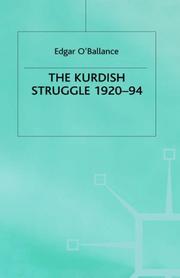
ISBN: 0312160062 0333644786 Year: 1996 Publisher: Basingstoke : Macmillan press,
Abstract | Keywords | Export | Availability | Bookmark
 Loading...
Loading...Choose an application
- Reference Manager
- EndNote
- RefWorks (Direct export to RefWorks)
Kurds --- Kurdes --- History --- Histoire --- Middle East --- Moyen-Orient --- Ethnic relations --- Relations interethniques
Book
ISBN: 2911617002 9782911617003 Year: 1996 Publisher: Paris : C. & N. Hage Chahine,
Abstract | Keywords | Export | Availability | Bookmark
 Loading...
Loading...Choose an application
- Reference Manager
- EndNote
- RefWorks (Direct export to RefWorks)
Middle East --- Moyen-Orient --- Bibliography --- Bibliographie --- Orientalisme --- Proche-Orient --- Exoticism in literature --- Middle East specialists --- Biography --- Middle East - Bibliography
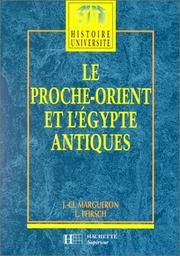
ISBN: 2010167996 Year: 1996 Publisher: Paris Hachette
Abstract | Keywords | Export | Availability | Bookmark
 Loading...
Loading...Choose an application
- Reference Manager
- EndNote
- RefWorks (Direct export to RefWorks)
Neolithic period --- Bronze age --- Néolithique --- Age du bronze --- Middle East --- Egypt --- Moyen-Orient --- Egypte --- Civilization --- History --- Civilisation --- Histoire
Book
ISBN: 8878601365 Year: 1996 Publisher: Torino, Italy : Edizioni della Fondazione Giovanni Agnelli,
Abstract | Keywords | Export | Availability | Bookmark
 Loading...
Loading...Choose an application
- Reference Manager
- EndNote
- RefWorks (Direct export to RefWorks)
Middle East --- Africa, North --- Moyen-Orient --- Afrique du Nord --- Economic conditions --- Economic integration. --- Conditions économiques --- Intégration économique
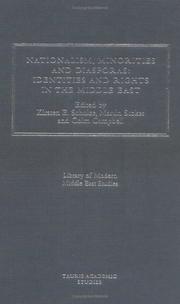
ISBN: 1860640524 Year: 1996 Volume: 8 Publisher: London Tauris
Abstract | Keywords | Export | Availability | Bookmark
 Loading...
Loading...Choose an application
- Reference Manager
- EndNote
- RefWorks (Direct export to RefWorks)
International law --- National movements --- Middle East --- Minorities --- Nationalism --- Minorités --- Nationalisme --- History --- Histoire --- Moyen-Orient --- Politics and government --- Politique et gouvernement --- Civil rights --- Minorités --- 20th century --- Ethnic relations
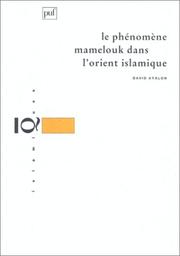
ISBN: 2130478069 9782130478065 Year: 1996 Volume: [6] Publisher: Paris Presses universitaires de France
Abstract | Keywords | Export | Availability | Bookmark
 Loading...
Loading...Choose an application
- Reference Manager
- EndNote
- RefWorks (Direct export to RefWorks)
Mamelouks --- Mamelukes --- Mamelukken --- Mameluks --- Middle East --- Moyen-Orient --- History --- Histoire --- Egypt --- 1250-1517 --- Mamelukes. --- Mamelouks. --- Mamelukken. --- Islam. --- Islam --- Geschichte. --- Histoire. --- Mamelucken. --- 1250-1517. --- Egipto --- Égypte --- Egypt. --- Egypte --- Historia
Book
ISBN: 3892042438 Year: 1996 Publisher: Gütersloh : Bertelsmann Foundation Publishers,
Abstract | Keywords | Export | Availability | Bookmark
 Loading...
Loading...Choose an application
- Reference Manager
- EndNote
- RefWorks (Direct export to RefWorks)
Africa, North --- Middle East --- Afrique du Nord --- Moyen-Orient --- Politics and government --- Foreign relations --- Politique et gouvernement --- Relations extérieures --- Relations extérieures
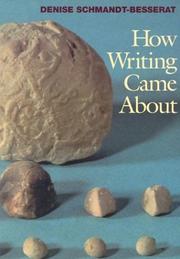
ISBN: 0292777043 9780292777040 Year: 1996 Publisher: Austin : University of Texas Press,
Abstract | Keywords | Export | Availability | Bookmark
 Loading...
Loading...Choose an application
- Reference Manager
- EndNote
- RefWorks (Direct export to RefWorks)
In 1992, the University of Texas published "Before writing, volume I : From Counting to Cuneiform" and "Before Writing, volume II : A Catalog of Near Eastern Tokens". In these two volumes, Denise Schmandt-Besserat set forth her groundbreaking theory that the cuneiform script invented in the Near East in the late fourth millennium B.C. - the world's oldest known system of writing - derived from an archaic counting device. "How writing came about" draws materials from both volumes to present Schmandt-Besserat's theory for a wide public and classroom audience. Based on the analysis and interpretation of a selection of 8.000 tokens or counters from 116 sites in Iran, Iraq, the Levant, and Turkey, it documents the immediate precursor of the cuneiform script.
Writing --- Tokens --- Ecriture --- Jetons --- History --- Histoire --- Middle East --- Moyen-Orient --- Antiquities. --- Antiquités --- Antiquities --- Tokens - Middle East --- Writing - History --- Middle East - Antiquities
Book
Year: 1996 Volume: 30 Publisher: Como : New Press,
Abstract | Keywords | Export | Availability | Bookmark
 Loading...
Loading...Choose an application
- Reference Manager
- EndNote
- RefWorks (Direct export to RefWorks)
Seleucids. --- Cities and towns, Ancient --- Prosopography --- Séleucides --- Villes antiques --- Prosopographie --- Middle East --- Syria --- Moyen-Orient --- Syrie --- Politics and government. --- History --- Politique et gouvernement --- Histoire
| Listing 1 - 10 of 28 | << page >> |
Sort by
|

 Search
Search Feedback
Feedback About UniCat
About UniCat  Help
Help News
News